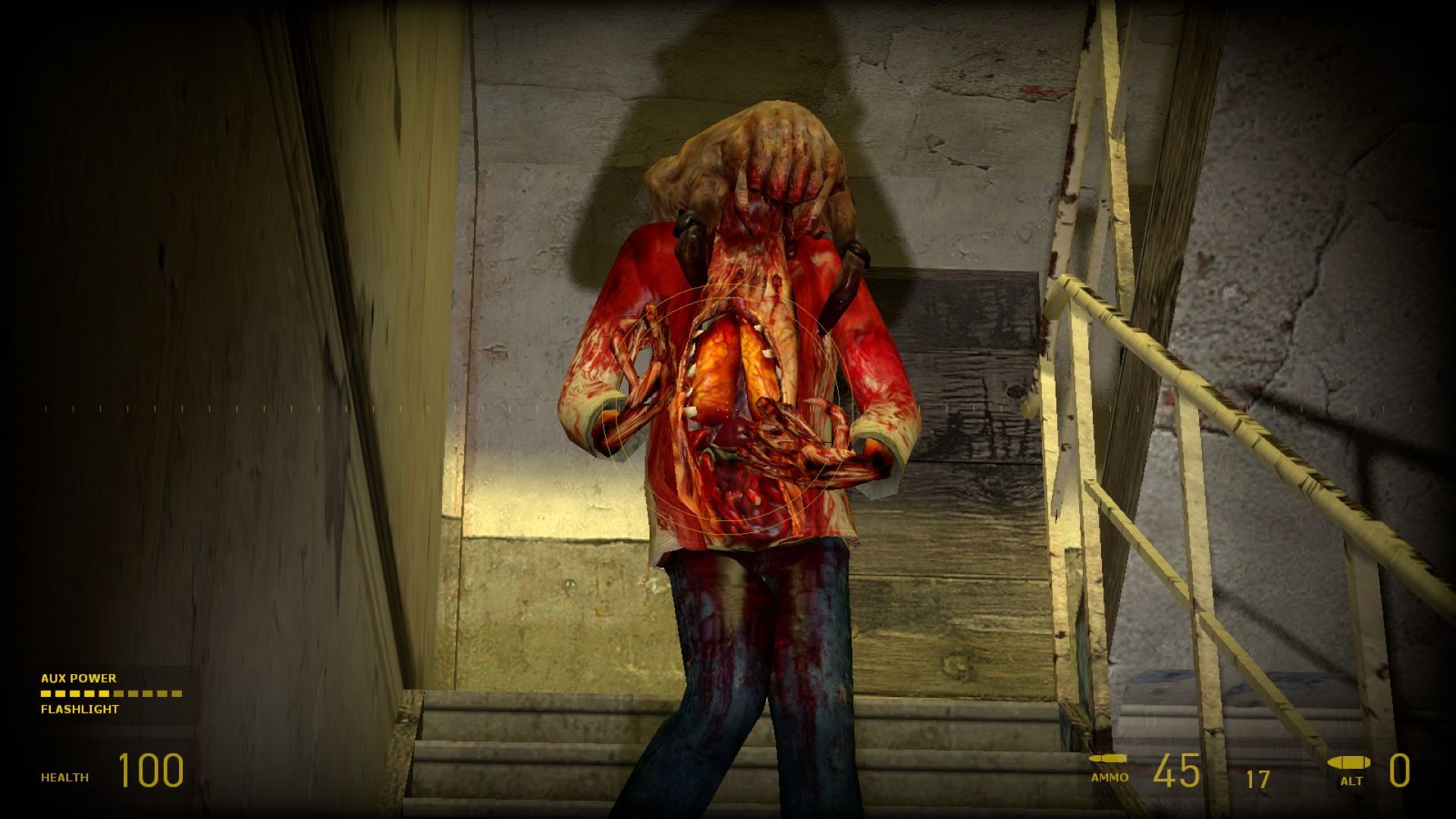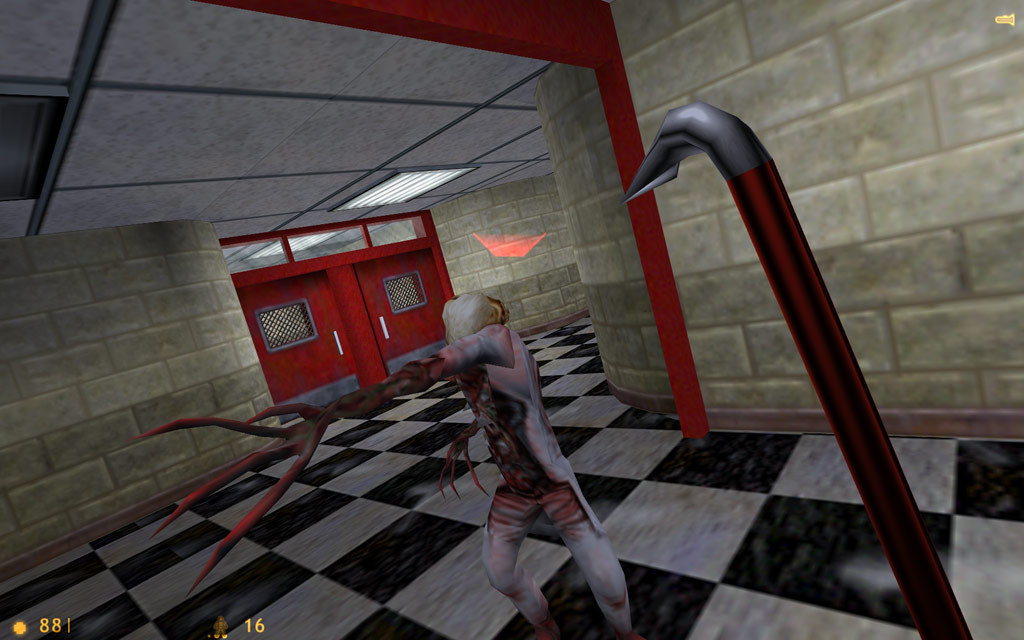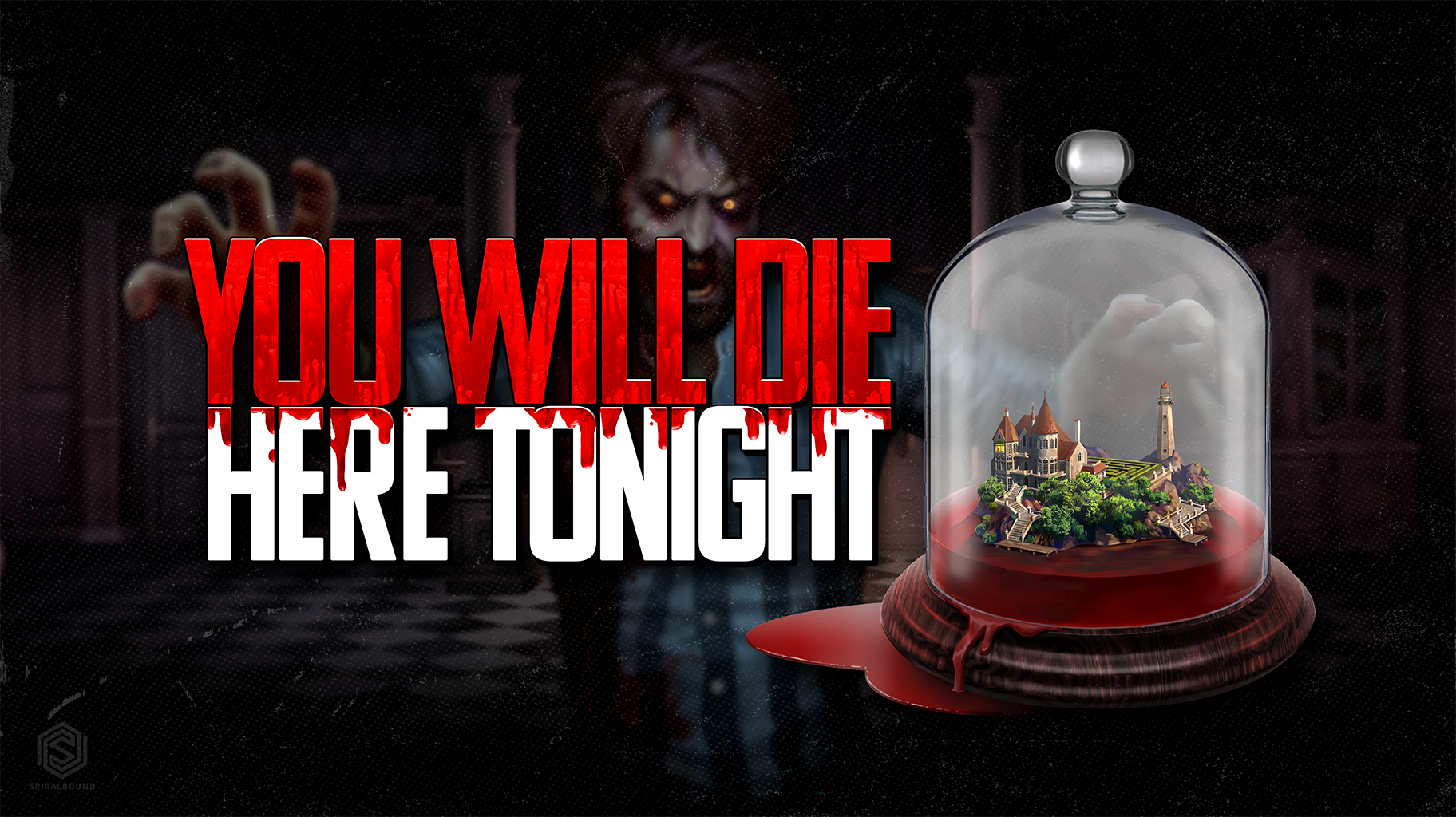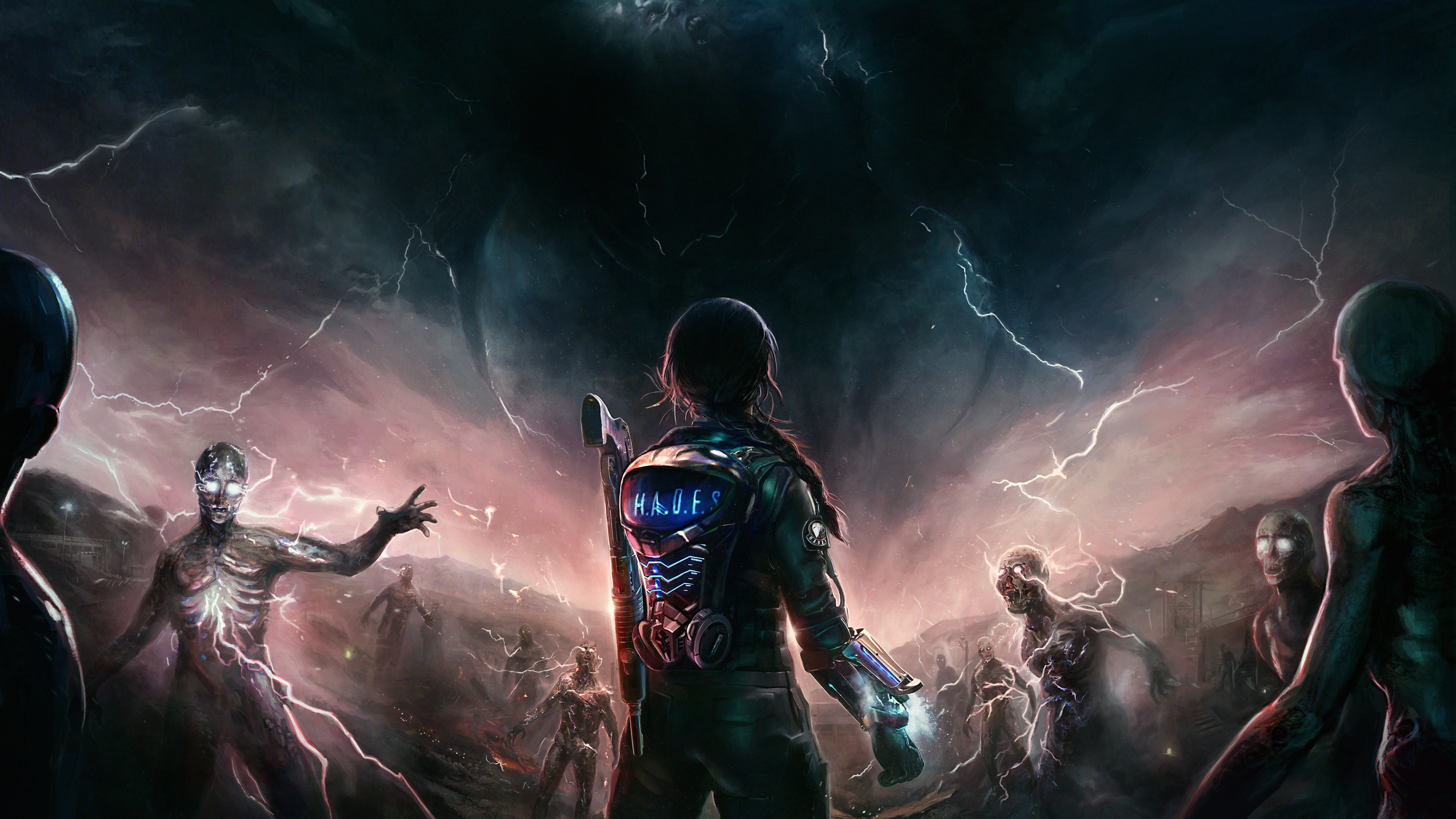
Monster Mania: Half-Life’s Hellish Headcrabs
Monster Mania is a weekly column celebrating the unique and varied monster designs in horror gaming.
Ever since the kaiju and Universal monster films from my youth, monsters have had my heart in a death grip. I remain obsessed with these towering titans and frightening freaks whose existence and construction defy logic. However, as the age-old adage goes: Looks aren’t everything. I would argue that monsters that are reflective of their singularly unique worlds leave a longer-lasting impression on me than just their ick factor (though I still do love me some ick).
And for my money, there are few examples of this better than Half-Life’s hoppy, four-legged bastards, the Headcrabs.
Fleshy, pumpkin-sized masses with four spindly legs and razor-sharp teeth on their underbelly, the Headcrab is not exactly known for its looks. But what makes them such a notable abomination is their parasitic purpose and how it is utilized repeatedly throughout the series.

Half-Life has always been an enigma. A smörgåsbord of genre influences blended into a straightforward but refined FPS. And in that straightforwardness, Valve took a seemingly simplistic premise and world and gave it subtle depth. Valve gives deeper purpose and utility to a monster most considers simple fodder.
Headcrabs are primarily concerned with lunging and latching onto their victim’s tasty cranium—this purpose being more nefarious than just satiating their appetite. Once attached, they control and puppet their recently acquired host’s body, turning them into zombies. Think less Romero and more of a hellish cosmic horror concoction in line with John Carpenter’s The Thing. Headcrab zombies sprout elongated claws, develop screwed-up facial mutations, and their chest cavities ripped open, revealing their innards.
And while memorable in the original game, I have always found Half-Life 2’s zombie design especially heinous. The same cosmic horror aesthetic returns, but the zombies make horrible utterances that sound like muffled screams from those being controlled. Furthermore, when killed, the Headcrab affixed to a host’s head will fall off, revealing the twisted and contorted face of the poor soul whose life was cut short. The victims’ faces are never mutilated to the point of being unrecognizable; instead, the haunted look of them realizing their fate in their final moments remains.
As much as I love grotesque zombie designs, what makes Half-Life’s zombies a reflection of their bleak world is the reality of who is being turned. In Black Mesa, it was Gordon’s coworkers. In City-17, it was civilians and resistance fighters. Parents. Friends. Fellow humans. And while Half-Life doesn’t have Gordon grapple with this realization (he is a silent protagonist, after all), it makes killing them all the more of a morose act.

Famously during the 7-hour war, in which the Combine overthrew Earth, Headcrabs were imperative in destabilizing and neutralizing Earth’s populace. Mortar shells filled with these parasitic pumpkins were dropped into city centers as an act of biological warfare. They were effectively transforming entire cities into ghost towns overnight.
The player is given a first-hand look at this destruction in Half-Life 2’s most overt horror-centric chapter, “We Don’t Go To Ravenholm.” Despite the best efforts of the town’s last living resident, the mad priest Father Grigori, the streets of Ravenholm belong to the dead. Hordes of zombies roam the streets, consisting of former Ravenholm residents. Emphasizing the degree to which this area is infected are the new permutations of zombies. There are poisonous Headcrabs, running zombies, and a zombie….hive? A zombie covered in poisonous crabs. Not a pretty picture.
Given the new combat abilities of each permutation, they fundamentally alter the dynamic of how players approach combat with zombies. And while the new combat abilities are simple (one is poisonous. One is fast. One is…uh, thicc), it’s down to how and where the permutations are deployed that forces the player to be more systematic in combat. From a design standpoint, this challenges the notion that Headcrabs are simple fodder. A bite from the poisonous crab drops Gordon’s HP to 1 for a brief period. The runner is a nuisance enemy that will swarm the player, restricting their movement. And the zombie hive has an arm that would make Tom Brady jealous with the range with which it lobs poisonous crabs.

“We Don’t Go to Ravenholm” remains an example of what Valve used to do best: Microcosm storytelling. The new permutations within the streets of Ravenholm are not seen for the rest of Gordon’s journey. A spurt of inventiveness that reinvigorates an enemy type that, after five chapters, had grown slightly stale. Ravenholm was a brief, spooky distraction from the brutalist concrete towers of City 17 plopped into the middle of a save-the-world narrative. For as much of an outlier, as this chapter was compared to the rest of Half-Life 2, its zombified occupants still felt right at home within the series’ horrifying monster-filled universe.
For more horror game reviews, opinions, and features, check out DreadXP.




